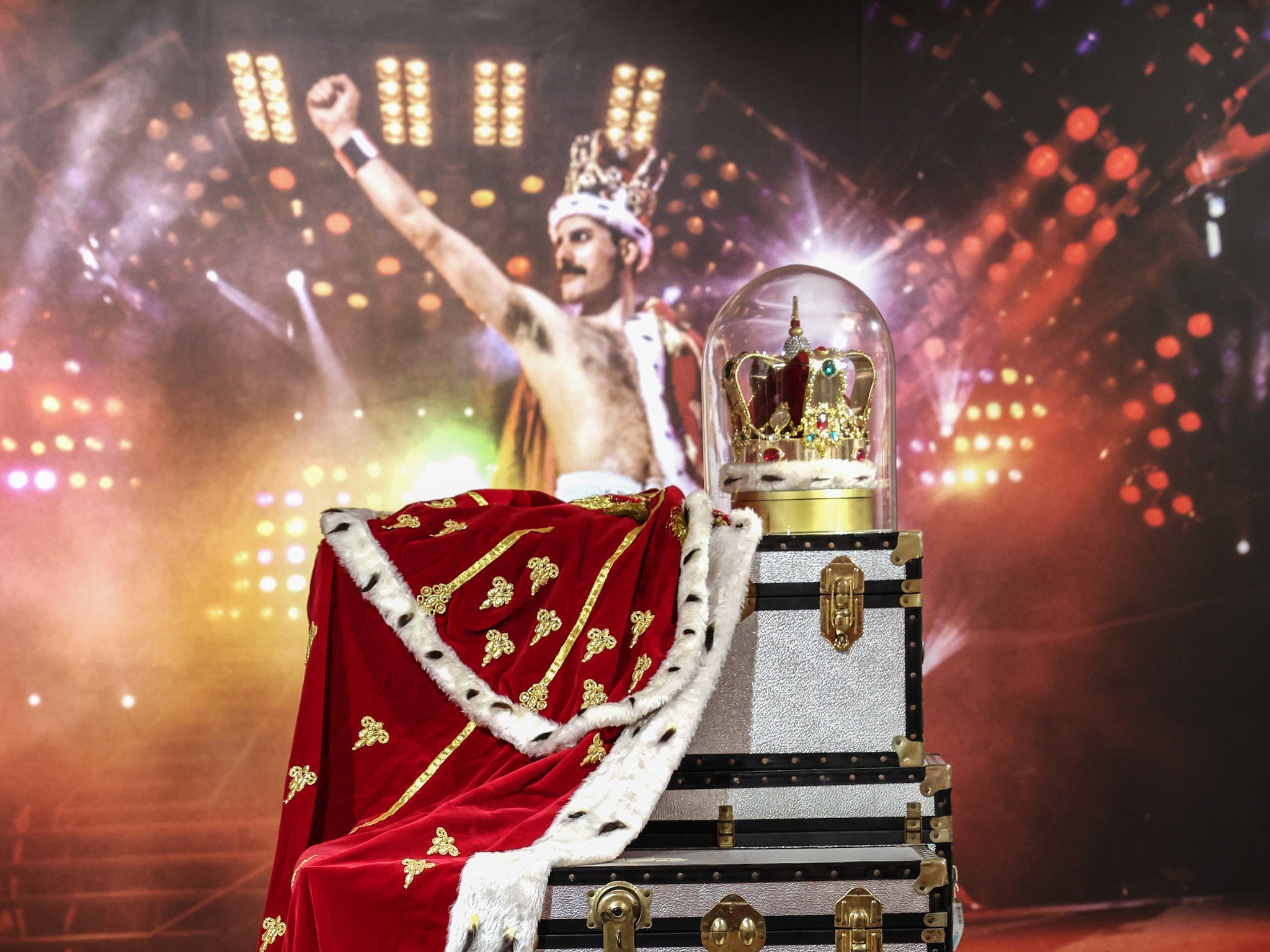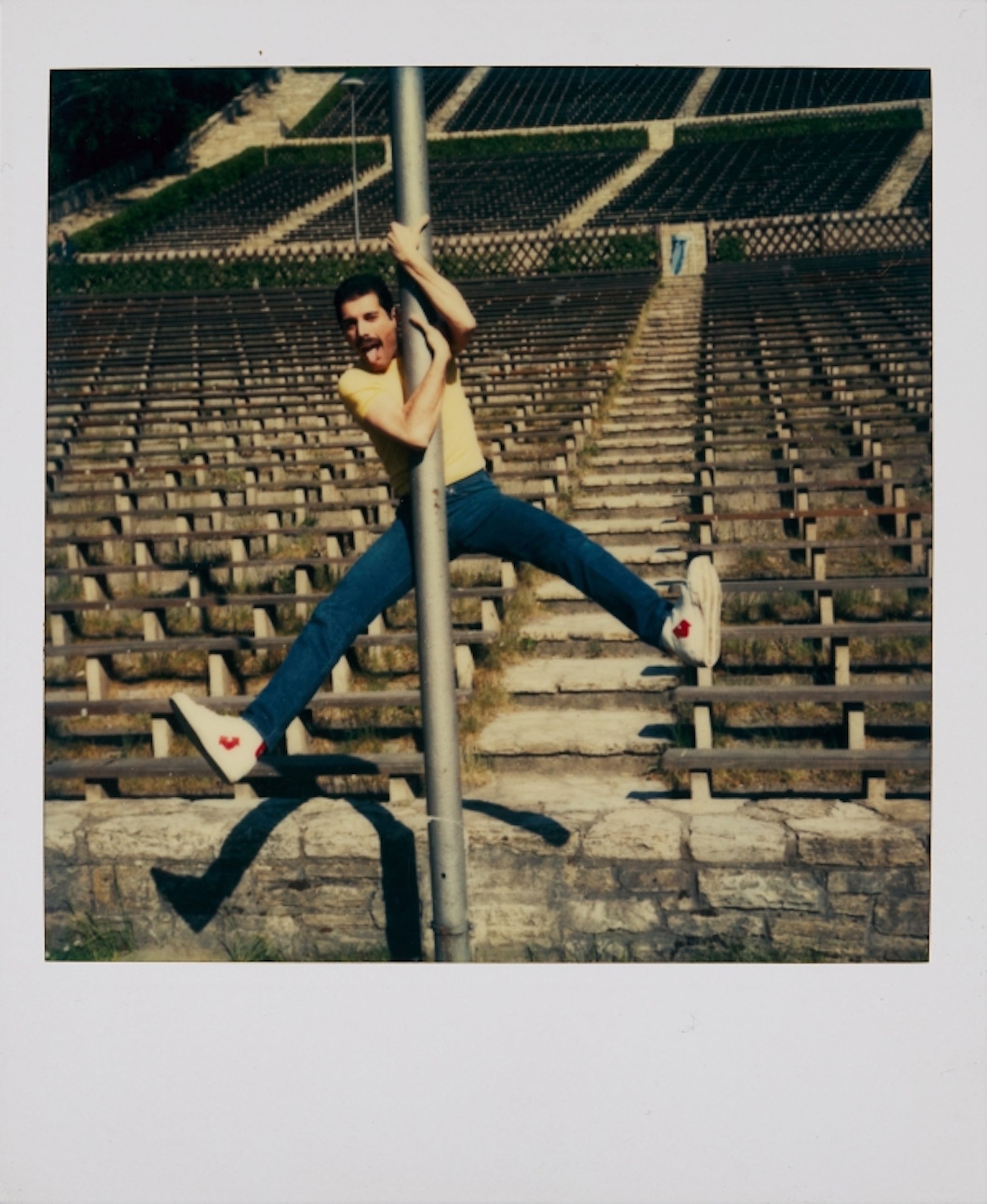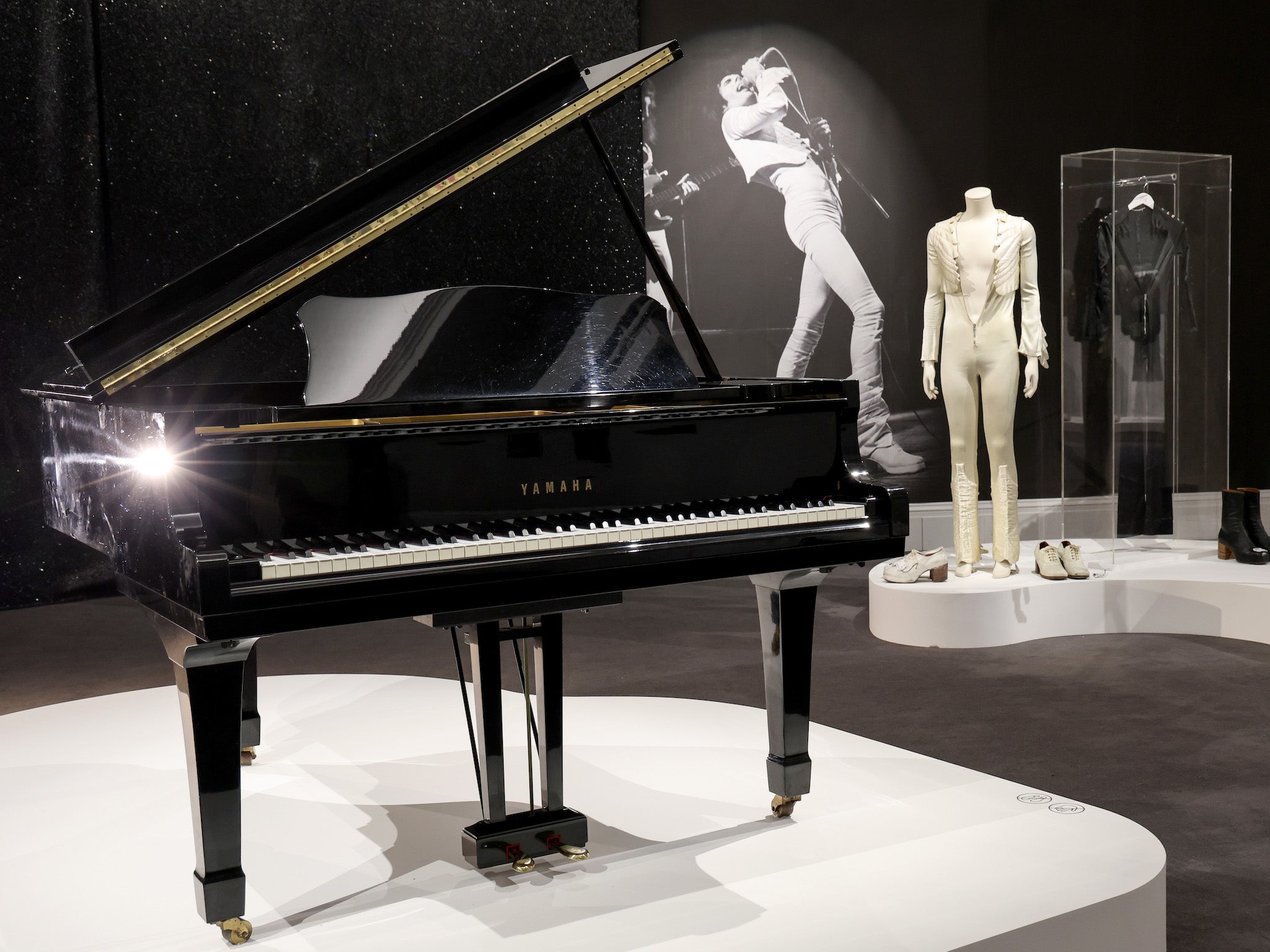Pianos, polaroids and Freddie Mercury’s Tiffany moustache comb: Why are we so fascinated by celebrity relics?
Half-eaten breakfast from Niall Horan, a tissue used by Scarlett Johansson, William Shatner’s kidney stone. As Freddie Mercury’s personal collection goes to auction at Sotheby’s, Laura Barton explores the ‘magical contagion’ that drives superfans to pay a fortune for celebrity memorabilia

It is hard to know which item will garner most interest over the coming weeks – the tiny silver Tiffany & Co moustache comb, perhaps, or possibly the handwritten lyrics to “We Are the Champions”. There is, after all, much to choose from among the 1,400 lots from the personal collection of Queen frontman Freddie Mercury, now open to the public ahead of a sale at London auction house Sotheby’s next month.
A black lacquered piano, once stationed in the singer’s drawing room, and upon which he wrote “Bohemian Rhapsody”, is expected to fetch somewhere between £2m and £3m. A selection of extravagant stagewear, from sequinned catsuits to red vinyl trousers, and of course the famous crown and robe worn for Queen’s final tour in 1986, which will likely draw vertiginous bids. But there are more affordable lots, too: 29 items of cat-themed paraphernalia. Polaroids. Vases. A travel Scrabble set.
Celebrity auctions often make headlines. In part, because of the bursts of glamour they offer – freeze-frame moments of cultural significance. But also the more quotidian insights into the lives of some of our biggest stars. They allow, too, a chance to marvel at the superfan’s peculiar acts of devotion. In 2008, for instance, Scarlett Johansson’s used tissue was sold on eBay for £3,600 (the price surely augmented by the actor’s claim that she had caught the cold that necessitated said tissue from none other than Samuel L Jackson). And significant sums have been paid for Michael Jackson’s burnt hair, Britney Spears’ pregnancy test, and William Shatner’s kidney stone. Not to mention the £72,000 set down for a piece of Vegemite toast half-eaten by One Direction singer Niall Horan.
While it’s easy to suppose such purchases are the preserve of the unhinged superfan, it’s worth noting that many items of celebrity memorabilia have been purchased by other celebrities. In 2000, Chris Evans famously bought the coat worn by Richard E Grant in the 1987 dark comedy Withnail & I (and sold it again in 2020, to raise money for the pandemic charity Scrubs Glorious Scrubs), while George Michael paid £1.67m for the piano John Lennon used to write “Imagine”. Even the intellectual elite shook off their customary reserve for last year’s sale of items from the estate of the late Joan Didion; the writer’s belongings, including blank notebooks, signature sunglasses, oak desk and paperweight, all went for considerably more than their projected worth.
Meanwhile, Debbie Reynolds was such a noted collector of Hollywood memorabilia, she dreamed of turning her collection into a museum. Instead, she sold many items at auction between 2011 and 2014, including the white “subway” dress worn by Marilyn Monroe in The Seven Year Itch (£4.32m), and Audrey Hepburn’s gown from My Fair Lady (£3.5m). In the 2016 documentary Bright Lights, we see Reynolds’ deep affection for these objects, the clear heartache as she contemplates parting ways with a selection of tuxedos once worn by the Rat Pack.
Studies have shown that if a celebrity auction item has been professionally cleaned, its value drops markedly. What we are paying for is proximity, a lingering sense of physical touch, as if a dress, a lyric sheet, a half-eaten breakfast, has been imbued with a celebrity’s inherent specialness. Anthropologists term this the “law of magical contagion” and while the simple knowledge of an item’s closeness to a celebrity carries a certain innate lustre for the purchaser, it has also been shown that this gleam would dim substantially if the buyer were told they could never tell anyone of their item’s starry past.
That Tiffany & Co moustache comb would be rendered little more than a dainty trinket, had it not caressed one of the most famous moustaches of all time. The act of buying celebrity memorabilia, then, is often one of conspicuous consumption and social signalling; it at once draws the collector closer to their object of affection, and tells the world that they, in some small way, belong more to you than to others.
Many years ago, in Holly Springs, Mississippi, I visited a museum of sorts named Graceland Too. Owned and curated by Paul MacLeod, it is a shrine to Elvis Presley, quite different to the late singer’s own home, some 40 miles away in Tennessee. There was no Jungle Room or private jet or meditation garden. Rather, Graceland Too was stacked to the rafters with Christmas decorations, action figures, dried flowers, photographs, VHS tapes, small yet somehow Elvis-significant pieces of carpet, crates of TV guides – each listed Elvis movie highlighted, and folder upon folder in which MacLeod had set down any mention of Presley in any form of media, anywhere, however cursory. When MacLeod himself died (the day after shooting dead a man on his porch) the contents of Graceland Too were duly sold at auction – a mere 600 items were deemed to be of value, and all were sold to an unnamed online bidder for $54,500 (£42,600).

To spend several hours at Graceland Too one hot summer afternoon was to gain some insight into the logic of the mega-fan. Each item held a story, a memory, a power of sorts, and MacLeod had amplified each and every one. As if here the law of magical contagion extended not just to the objects touched, but even to the letters of Elvis’s name. The thought of The King made physical. We grasp the idea that we can own objects somewhere around the age of two. By the age of four, we have understood the notion of contamination through physical contact and extended it not just to encompass germs and pathogens but also abilities and attributes. The touch of a saint is a blessing; the purchase of George Clooney’s overalls bestows upon us some of his talent and charm.

One might wonder how this will shift in an increasingly digital age – when so much of what we love and what is meaningful to us, from music to photographs to intimate correspondence, is stored in the cloud (whatever and wherever that is). And yet, just this past spring, we learnt of a £1bn-a-year boom in the self-storage industry, fuelled by the housing crisis and by our own unwillingness to let go of the inanimate objects we have accumulated across our lives.
Though it’s cumbersome and irrational, and sure to frustrate TV’s favourite anti-hoarder Marie Kondo, there is something rather lovely about this attachment to the objects of our past – that the clutter of our lives can acquire a reverence and love; that even mere mortals can bring a kind of magical contagion.
Join our commenting forum
Join thought-provoking conversations, follow other Independent readers and see their replies
Comments


Bookmark popover
Removed from bookmarks